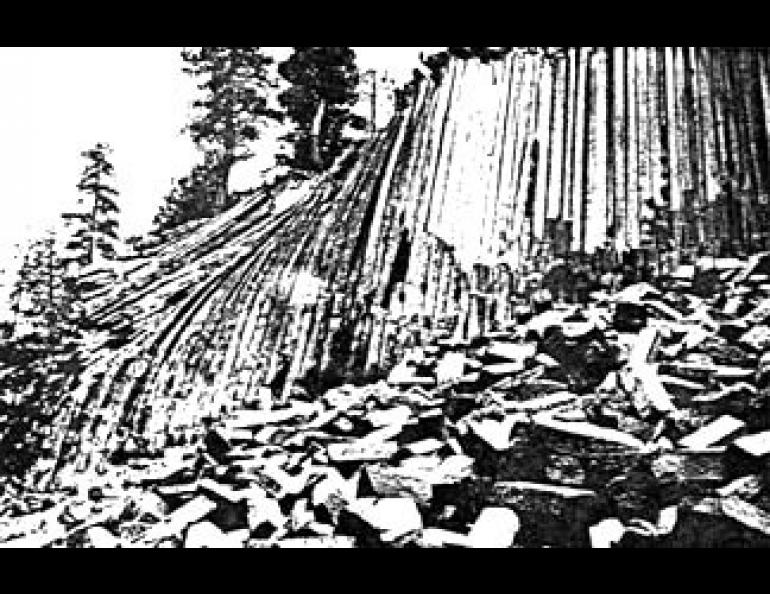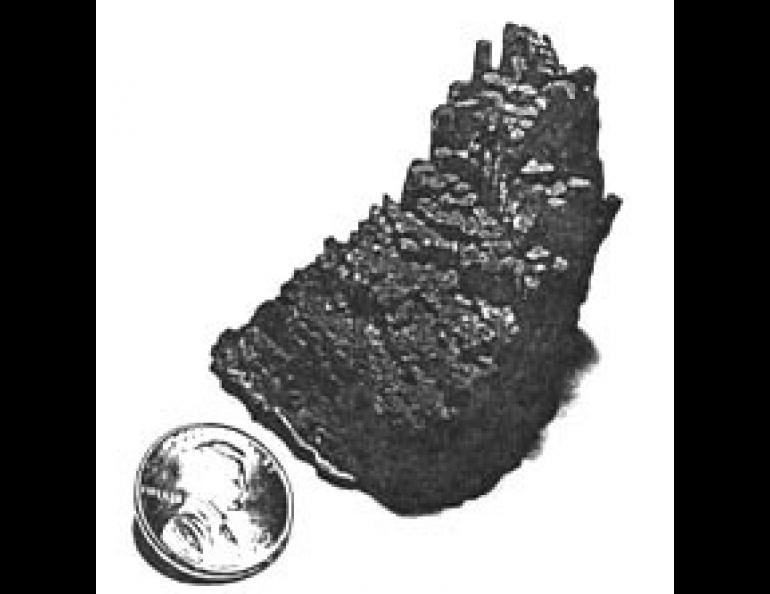

Columnar Jointing
As volcanic rocks cool after being erupted onto the earth's surface in flows or being formed into intrusive sheets below ground, they usually shrink. This shrinkage produces tensile stresses, and the resulting strain may accumulate to the point where the rocks fracture.
Cooling begins first where the eruptive body - which geologists call an "igneous mass" - meets its surroundings (whether it be air or another rock body) and proceeds inward. The opening cracks follow.
If the igneous mass is chilled uniformly in contact with a flat surface, the fissures will grow at right angles to that surface and develop in three directions, each at 120 degrees to the other two. This leads to the development of hexagonal (six- sided) columns. At the same time, joints form perpendicular to, or across, the axis of the columns. Under ideal circumstances, the resulting formation resembles a closely packed box of pencils which have been broken here and there across their center lines.
There is usually a great deal of variation in the shape and perfection of the columns. They may curve, especially if the surfaces from which they grow are not parallel. In cross-section they may vary from hexagonal to pentagonal or even square.
More commonly, tension cracks in erupted bodies are so irregular that any tendency toward hexagonal columnar structure is barely discernible. Yet, where the structure is well developed, the rock formation can be striking. One of the more famous examples in the United States is the "Devil's Post Pile," a national monument in Madera County, California. Cliffs of nearly perfect vertical columns rise almost 100 feet in places, flanked by areas where the "posts" appear to have been bent and overturned like a forest of wind-felled trees or a pile of jackstraws.
Geologist Stephen Reidel recently discovered an Alaska display of columnar jointing near Healy that is similar in most respects, save two, to the Devil's Post Pile. One difference is that, while columnar jointing most commonly occurs in basalt, the Healy display is found in a body of magnetite, an iron ore. In addition, close examination reveals that the Healy formation has grown to dimensions a couple of inches tall with columns the size of pencil leads, rather than forming the King Kong version more commonly seen.
Reidel observes that the magnetite was intruded into what appears to have been wet sand. This may have hastened the cooling process and solidified the ore before it had time to form larger structures, thus resulting in the Lilliputian dimensions of the columns.





